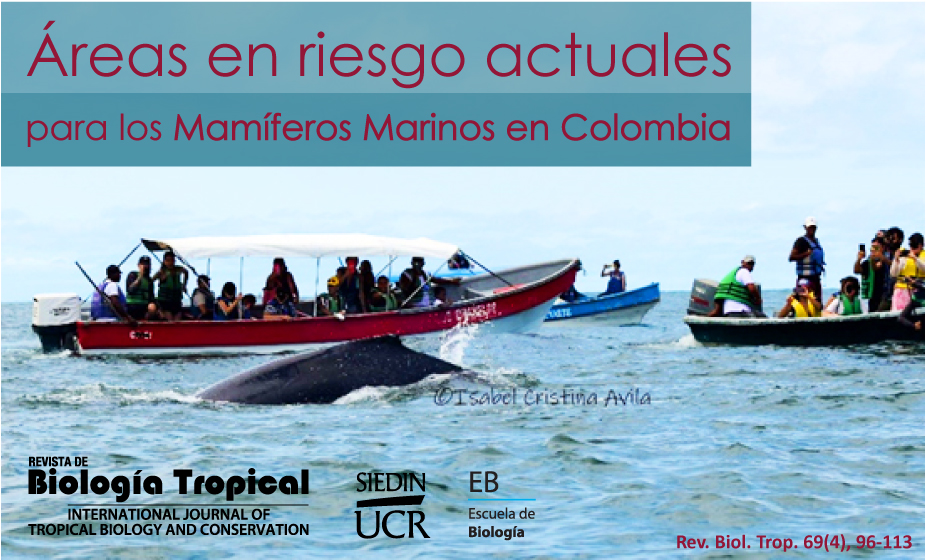Abstract
Introduction: Marine mammals are being affected by different threats that cause a negative effect on species or populations. To mitigate these impacts, it is necessary to establish the spatial and temporal variation of these threats for each species. Objective: to make a quantitative visualization of threats affecting marine mammal species in Colombia in the last three decades, and to identify actions required to mitigate those threats. Methods: In the present study, a review and georeferencing of the documented threats for marine mammals present in Colombia (35 species) between 1991 and 2020 was carried out. A database with identified, localized and dated threats was generated. Additionally, risk maps were created, superimposing the different taxa and threats to be able to visualize a general panorama of where the threats are occurring in Colombia. Results: 63 % of the marine mammals in Colombia (22 species) registered at least one threat. Bycatch and interactions with fishing gear affected most species (16 species), followed by direct capture (8 species) and vessel traffic / transit (6 species) and alteration of ocean physics (6 species). Direct human activities, mainly fishing, was the main source of threat that affected most of the species (18 species). The most affected species, in terms of the greater diversity of threats they face, are the humpback whale (Megaptera novaeangliae), the Caribbean West Indian manatee (Trichechus manatus), the marine tucuxi (Sotalia guianensis) and the bottlenose dolphin (Tursiops truncatus). The maps obtained show that 99.9 % of Colombia's marine territory presents some degree of risk for the marine mammal community. High-risk areas were identified for the Pacific in the surroundings of Buenaventura, Guapi, Gulf of Cupica and Bahía de Tumaco, and for the Caribbean in the Gulf of Urabá, Gulf of Darién, Gulf of Morrosquillo, surroundings of Barranquilla and Ciénaga Grande de Santa Marta and in the Gulf of Coquivacoa. In general, the pattern of areas at risk based on documented threats for marine mammals in Colombia has remained similar through the three last decades, however areas at risk by pollution and resource depletion have increased in the last decade 2011-2020. Conclusion: Marine mammals in Colombia currently are in risk due to several threats, especially related with fishing, harvesting and shipping activities, and mainly in coastal areas. It is recommended to evaluate in detail the status of marine mammalian species in Colombia, especially in the high-risk areas identified in the present study, and to take management actions that promote marine mammal conservation.
##plugins.facebook.comentarios##

This work is licensed under a Creative Commons Attribution 4.0 International License.
Copyright (c) 2022 Revista de Biología Tropical



